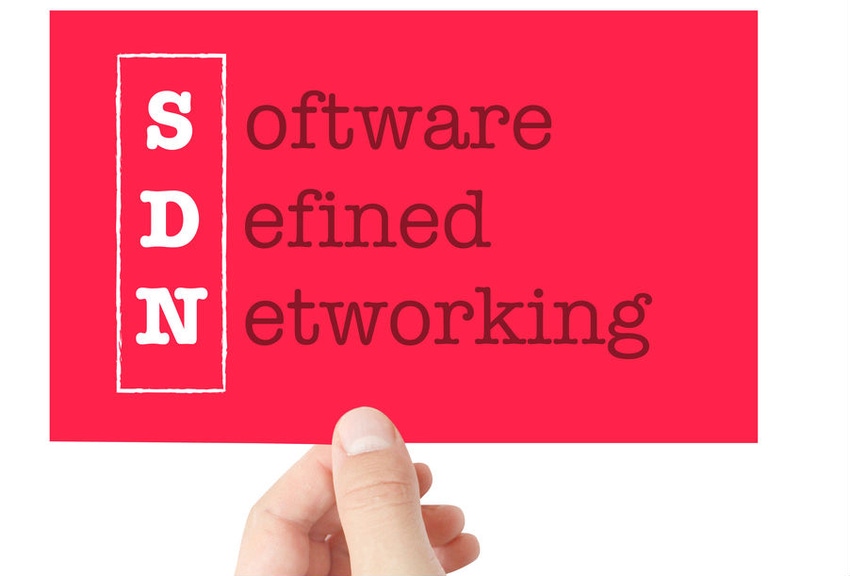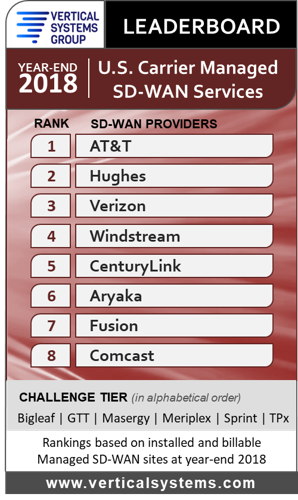It has been a busy 12 months for both organizations.

Two non-U.S. companies are growing their market presence worldwide.
Martello Technologies and Telstra both chatted with us about SD-WAN, expansion and the roles their partners play in customer acquisition. It has been a busy 12 months for both organizations.
Martello was coming off its merger with SD-WAN vendor Elfiq Networks when we spoke to it last summer. The company went on to complete a $7.5 million funding round, go public on the Toronto Stock Exchange (TSX), acquire the IT monitoring company Savision and expand its agreement with Mitel to include coverage for additional Mitel communication systems.
Martello, which is traditionally known for monitoring and managing UC networks, earns a significant chunk of its business through its close partnership with Mitel, but it is opening new revenue opportunities as it attacks new markets. The purchase of Elfiq is an important example.
Mitel’s channel drove 90% of Martello’s third-quarter revenue in fiscal 2018, but the number dropped to 55% this year. Meantime, Martello’s Q3 organic sales ticked up 44% year-over-year.
CEO John Proctor said the Savision acquisition doubled Martello’s sales and marketing team and added 50 new partners. Savision’s Amsterdam headquarters gave Martello a presence in Europe.

Martello’s John Proctor
“That allows us to support our European partners, but at the same time a lot of partners are interested in bringing that Savision technology to their clients, or even for the MSPs, using it themselves to be able to understand all of their clients simultaneously,” Proctor said.
Martello maintains its relationship with Mitel channel partners, many of whom are sell more than just Mitel technology. They may benefit from Savision, which offers a single-pane-of-glass IT monitoring dashboard.
“We’re able to go straight to our Mitel partners and say, ‘This supports what you’re doing with Mitel but also supports all your other technologies as well,'” he said.
Proctor reports “steady” growth on the SD-WAN side. Asian markets such as Vietnam and India in addition to rural regions, have been strong targets.
“We see the take-off in markets that are very price-sensitive and tech-savvy,” he said. “It continues to grow.”
Martello listed the United Nations as one of its large customers. It offers the U.N. connectivity in remote locations. The customer represents a chief use case despite its high profile.
“There is no IT guy at these remote locations. There’s no guy that has Cisco certification. They’re not doing that, so they need to have stuff that just works,” he said. “That’s what we do. It’s the same thing with hotels. There’s no dedicated IT guy in a hotel with network certifications.”
Martello recently won the bid for large South American bank in South America, beating out at an American competitor. Proctor said the proof-of-concept stage showed…
…a lower cost of ownership (which includes less money spent on certifications) for Martello and a higher ease of use. The customer and the partner walked away convinced.
“When we can offer you some technology that allows you to be more competitive and bring better value to your clients, it makes an awful lot of sense,” Proctor said.
Proctor said Martello relishes the opportunity to do a head-to-head proof-of concept. The company has been able to win the loyalty of partners, who have served as a key on-ramp for Martello, according to Proctor.
“And no, we don’t have the brand like some other people like Cisco and F5, but certainly when our partners choose us, we become very stick with them, because they know we’ll support them,” he said. “They know we give a cost-effective solution, and we have a very good value for money.”
Proctor said Martello has been expanding its technology portfolio to ensure that it meets more partner and customer needs. Partners may tend to associate the company with UCaaS due to Martello’s legacy as a UC monitoring provider, but the company designs its SD-WAN for more than UCaaS.
It’s not shocking, however, that the sensitive network traffic related to UCaaS gives it special attention.
“Because of the real-time nature of UCaaS, it is often the canary in the coalmine when you have network problems,” Proctor said.
Proctor said partners are asking for SD-WAN that supports everything partners are giving to their clients. Customers need more than a UCaaS optimizer.
“They’re not going to buy an SD-WAN that just does UC and another SD-WAN that does Office 365 and another SD-WAN that does Google and another that does AWS,” Proctor said. “That’s ridiculous. Nobody’s going to do that. The point is, yes, we do UCaaS really really well, because that’s something very important in network sensitivity. But [we do] other pieces too.”
The Telstra Connection
The Asia-Pacific market is warming up to SD-WAN, according to Telstra Americas President Nick Collins.

Telstra’s Nick Collins
“SD-WAN is becoming incredibly prevalent in customer conversations in Asia-Pac, probably not to the extent that we’ve seen here in the United States, but certainly the trajectory is strong,” Collins said.
SD-WAN’s multi-location capabilities come in handy for the growing number of companies want support across various territories in the Asia-Pacific region. While Singapore, Hong Kong, Taiwan and Japan are popular areas for international companies to headquarter, Collins said Indonesia, Malaysia, India and China are growing hubs.
We wrote one year ago about Telstra’s U.S. network expansion. The Australian company is celebrating its 25th year in the states and seeing immense growth. Its American customers tend be those who need to send traffic across the Pacific Ocean.
Collins said…
…capacity demand on Telstra’s international network doubles nearly every two years. A wave of U.S. innovation– including hyperscale cloud providers, media streaming companies and e-commerce – is playing a chief role in the increase.
“We see more opportunity here (U.S.) now than at probably any point in our previous 25 years,” Collins said. “If you think about where internet is going and where commerce is going, the bridge between the United States and Asia (and Asia is very much where we anchor a lot of our investments) is just continuing to grow.”
Telstra is building its U.S. presence with that in mind. The company added its fifth office in Seattle and plans to launch a sixth in Chicago.
Similar to Martello, U.S. partners have helped Telstra overcome its lack of a household name. The bulk of Telstra’s channel comes from Pacent, a service provider Telstra acquired several years ago. Collins said partners bring crucial customers relationships to the table. Telstra is working to equip those partners to address the intercontinental divide.
“One of the biggest things we end up focusing on is educating the channel partners, who are probably not as familiar selling services to the end customers in Asia. We are very optimistic about the enormous opportunity that exists and continues to exist between the U.S. and Asia-Pac, which is why we continue to invest,” Collins said.
Carrier Leaderboard
We wrote yesterday about Vertical Systems Group’s new ranking for SD-WAN. The market research group released its Carrier Managed SD-WAN Services leaderboard, which AT&T led.

Courtsey of Vertical Systems Group
Hughes, which is known for satellite broadband solutions, surprised us by finishing second, just ahead of Verizon. Windstream, which has made SD-WAN a key growth target, slotted in at fourth.
The study praised carriers for the ability to handle more complex network migrations, as opposed to pure-play vendors that pride themselves on simple, easily deployable solutions.
“We believe that network operators with deep experience in MPLS, Ethernet and IP are most favorably positioned to support enterprise customers as they transition their networks to SDN,” said Rick Malone, principal of Vertical Systems Group.
Quick Hits
Fortinet’s vice president of channel sales penned a blog post offering advice for migration away from MPLS. Check out his post on our site.
Integrated LTE is now a option on FatPipe Network’s SD-WAN platform. Customers can use LTE as failover for when fixed lines fail. Get details from FatPipe’s announcement.
Adaptiv Networks unveiled the seventh version of its SD-WAN solution. Read its full announcement and watch the video interview they did at Channel Partners.
We recorded the always entertaining SD-WAN Thunderdome from last month’s conference. Four ambitious vendors squared off against each other in front of a partner audience.
Read more about:
AgentsAbout the Author(s)
You May Also Like


